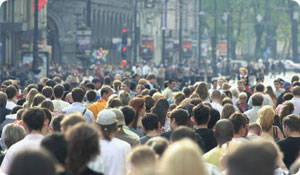
The U.S. President's Cancer Panel Report, released in April 2010, presented some sobering results: We have significantly underestimated the true burden of cancer caused by environmental factors. In fact, the National Cancer Institute implicates environmental factors in about two-thirds of cancer cases.
The environment is everything outside our body that enters or interacts with it, such as substances in our air, water, and soil; exposure to radiation; infectious agents, such as bacteria and viruses; and alcohol, tobacco, and food, et cetera. Experts estimate that tobacco alone causes about 30 percent of preventable cancers. Because environmental factors interact with gene changes in our bodies, everyone's risk factors for cancer are different.
The Cancer Panel Report indicates that Americans are exposed to roughly 80,000 chemicals each day. Only about 200 have been assessed for safety; most are unregulated or poorly studied. Some environmental factors are linked to specific types of cancer. For example, we know asbestos causes lung cancer, Benzedrine (a chemical in dyes) causes bladder cancer, and tobacco causes lung and other cancers. In general, most of us don't know what dangerous substances we're regularly exposed to.
What to Watch for
Here, environmental factors you need to consider.
Industrial, military, and agricultural occupations. Employees in these industries are frequently exposed to higher levels of toxic and cancer-causing agents.
Natural sources. Radon gas, for example, a naturally occurring substance, is the second leading cause of lung cancer, and inorganic arsenic in water is also carcinogenic.
Medical sources. Ironically, the diagnostic imaging and radiation used in cancer screening tests (which has doubled per person in recent years) puts us at risk for cancer. Furthermore, a recent study reported that ionizing radiation used in medical imaging causes genetic damage that may cause cells to turn cancerous, and radiation can alter the local environment so future cells are more likely to become cancerous.
Lifestyle. Some modern conveniences are suspected culprits in the rising incidence of cancer, such as dry cleaning chemicals, pesticides, cellular communications, and emissions from cars and other transportation modes. Lifestyle choices, such as smoking, drinking excessive alcohol, eating an unhealthy diet, and not exercising also increase our risk of developing cancer.
The Cancer Panel experts estimate that 41 percent of Americans will be diagnosed with cancer at some point in their life, and 21 percent will die from cancer. We should each be aware of our environmental and lifestyle risk factors and take steps to minimize our risks.
Sources
National Cancer Institute. "Reducing environmental cancer risk." Web. April 2010.
http://deainfo.nci.nih.gov/advisory/pcp/pcp08-09rpt/PCP_Report_08-09_508.pdf
National Cancer Institute. "Understanding Cancer Series: Cancer and the Environment ![]() ." Web. 1 September 2006. http://www.cancer.gov/cancertopics/understandingcancer/environment
." Web. 1 September 2006. http://www.cancer.gov/cancertopics/understandingcancer/environment
National Cancer Institute. "Cancer and the environment." Web. August 2003.
http://www.cancer.gov/newscenter/Cancer-and-the-Environment
National Institutes of Health. National Institute of Environmental Health. "Report on Carcinogens (RoC)." Web. 31 March 2010. http://ntp.niehs.nih.gov/index.cfm?objectid=72016262-BDB7-CEBA-FA60E922B18C2540





